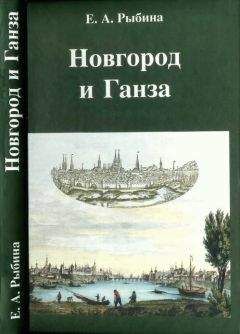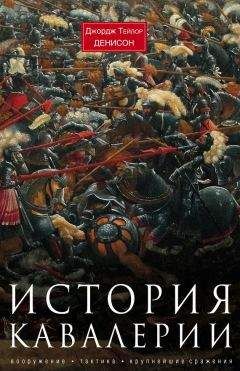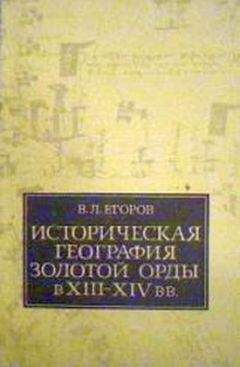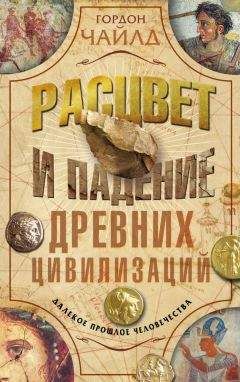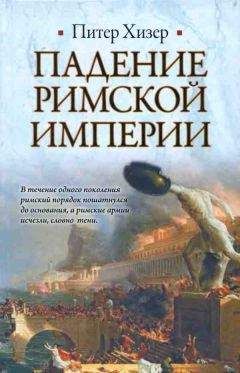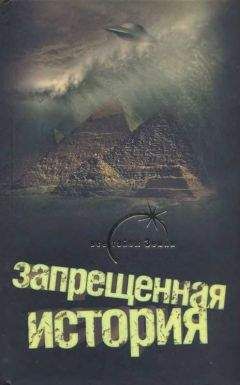Ричард Томпсон, - Неизвестная история человечества
Скачивание начинается... Если скачивание не началось автоматически, пожалуйста нажмите на эту ссылку.
Жалоба
Напишите нам, и мы в срочном порядке примем меры.
Описание книги "Неизвестная история человечества"
Описание и краткое содержание "Неизвестная история человечества" читать бесплатно онлайн.
В «Неизвестной истории человечества» Майкл Кремо и Ричард Томпсон приводят поразительные данные, о которых научная общественность была когда‑то осведомлена. Долгое время эти сведения были вне поля зрения ученых благодаря так называемой «фильтрации знаний». Суть сводится к тому, что современный человек существовал на Земле на протяжении многих миллионов лет.
Чтобы извлечь эти данные на свет божий, авторам пришлось выполнить колоссальный объем исследовательской и аналитической работы, результаты которой столь впечатляющи, изложены столь подробно, что уже поэтому достойны самого пристального внимания. Настоящая работа предназначается широкому кругу читателей. Мы также надеемся, что она привлечет внимание и непредубежденных специалистов.
Steen‑McIntyre, V., Fryxell, R., and Malde, H. E. (1981) Geologic evidence for age of deposits at Hueyatlaco archaeological site, Valsequillo, Mexico.Quaternary Research 16; 1‑17.
Steiger, В. (1979) Worlds Before Ourffwn. New York, Berkley.
Stern, Jr. J. Т., and Susman, R. L. (1983). The locomotor anatomy of Australopithecus afarensis. American Journal of Physical Anthropology, 60: 279–318.
Stokes, W. L. (1974) Geological specimen rejuvenates old controversy. Dialogue, S; 138–141.
Slopes H. (1881) Traces of man in the Crag. British Association for the Advancement of Science, Report of the Fifty‑first Meeting, p. 700.
Slopes, M. C. (1912) The Red Crag portrait. The Geological Magazine, 9: 285–286.
Straus, Jr., W. L. (1929) Studies on the primate ilia. American Journal of Anatomy, 43: 403.
Stringer, С. В., Hublin, J. J., and Vandermeersch, B. (1984) The origin of anatomically modern humans in Western Europe. In Smith, R H., and Spencer, F., eds. The Origin of Modern Humans: A WorldSurvey of the FossilEvidence. New York, Alan R. Liss, pp. 51‑135.
Susman, R. L. (1979) Comparative and functional morphology of hominoid fingers. American Journal of Physical Anthropology, 50: 215–236.
Susman, R. L. (1988) Hand of Paranthropus robustus from Member I, Swartkrans: fossil evidence for tool behavior. Science 240: 781–783.
Susman, R. L., and Creel, N. (1979) Functional and morphological affinities of the subadult hand (O.H. 7) from Olduvai Gorge. American Journal of PhysicalAnthropology, 51: 311–332.
Susman, R. L., and Stern, Jr., J. T. (1979) Telemetered eleclromyography of the flexor digitorum profundus and flexor digitorum superficialis in Pan troglodytes and implications for interpretation of the O.H. 7 hand. AmericanJournal of Physical Anthropology, 50: 565–574.
Susman, R. L., Stem, Jr., J. T., and Jungers, W. L. (1984) Arboreality and bipedality in the Hadar hominids. Folia primatologica, 43: 113–156.
Szabo, B. J., Malde, H. E., and Irwin‑Williams, C. (1969) Dilemma posed by uranium‑series dates on archaeologically significant bones from Valsequillo, Puebia, Mexico. Earth and Planetary Science Letters, 6: 237–244.
Tamers, M. A., and Pearson, F. J. (1965) Validity of radiocarbon dates on bone. Nature, 208: 1053–1055.
Tardieu, C. (1979) Analyse morpho‑functionelle de L’ articulation du genou chez les Primates. Application aux hominides fossiles. Thesis, University ofPierre. Tardieu C. (1981) Morpho‑functional analysis of the articular surfaces of the knee‑joint in primates. In Chiarelli, А. В., and Corrucini, R. S., eds. Primateevolutionary biology. Berlin, Springer Verlag, pp. 68‑80.
Tassy, P. (1983) Review of Les Betes Huniaines d'Afrique, by B. Heuvelmans. Cryptozwtogy, 2: 132–133.
Taylor, L. R., Compagno, L. J. V., and Struhsaker, P. J. (1983) Megamouth – a new Hague, Mouton, pp. 361–370.
Tuttle, R. H. (1981) Evolution of hominid bipedalism and prehensile capabilities. Philosophical Transactions of the Royal Society of London, B, 292: 89‑94.
Tuttle, R. H. (1985) Ape footprints and Laetoli impressions: a response to the SUNY claims. In Tobias, P. V., ed. Hominid Evolution: Past, Present, andFuture. New York, Alan R. Liss, pp. 129–133.
Tuttle, R. H. (1987) Kinesiological inferences and evolutionary implications from Laetoli biped trails G‑1, G‑2/3, and A. In Leakey, M. D., and Harris, J. eds. Laetoli: A Pliocene Site in Northern Tanzania. Oxford, Clarendon Press, pp. 508–517.
Van Andel, T. H. (1981) Consider the incompleteness of the geological record. Nature, 294: 397–398.
Vasishat, R. N. (1985) Antecedents of Early Man in Northwestern India. New Delhi, Inter‑India Publications.
Vere, F. (1959) Lessons ofPiltdown. Emsworth, A. E. Norris. Verworn, M. (1905) Die archaeolithische Cultur in den Hipparionschichten von Aurillac (Cantal). Abhandlungen der koniglichen Gesellschaft derWissenschaften zu Gottingen. Mathematisch‑Physikalische Klasse, NeueFolge, 4(4): 3‑60. (*)
Volk, E. (1911) The archaeology of the Delaware Valley. Papers of the PeabodyMuseum of American Archaeology and Ethnology, Harvard University, 5.
Von Diicker, Baron (1873) Sur la cassure artificelle d'ossements recueillis dans le terrain miocene de Pikermi. Congres International d'Anthropologie eld'Archeologie Prehistoriques, Bruxelles 1872, Compte Rendu, pp. 104–107. (*)
Von Koenigswald, G. H. R. (1937) Ein Unterkieferfragmentdes Pithecanthropus aus den Trinilschichten Mitteljavas. Proceedings of the KoninklijkeNederlandse Akadamie van Wetenschappen Amsterdam, 40: 883–893.
Von Koenigswald, G. H. R. (1940a) Neue Pithecanthropus Funde 1936–1938. Wetenschappelijke Mededeelingen Dienst Mijnbouw Nederlandse Oost‑Indie, 28: 1‑223.
Von Koenigswald, G. H, R. (1940b), Preliminary note on new remains of Pithecanthropus from central Java. Proceedings of the Third Congress ofPrehistoriansofthe Far East, Singapore, 1938, pp. 91‑95.
Von Koenigswald, G. H. R. (1947) Search for early man. Natural History, 56; 8‑15.
Von Koenigswald, G. H. R. (1949a) The discovery of early man in Java and Southern China. In W. W. Howells, ed. Early Man in the Far East. Detroit, American Association of Physical Anthropologists, pp. 83‑98.
Von Koenigswald, G. H. R. (1949b). The fossil hominids of Java. In van Bemmelen, R. W., ed. The Geology of Indonesia. Vol. IA. The Hague, Government Printing Office, pp. 106–111.
Von Koenigswald, G. H.R. (1956) Meeting Prehistoric Man. London, Thames and Hudson.
Von Koenigswald, G. H. R. (1968a) Observations upon two Pithecanthropus mandibles from Sangiran, central Java. Proceedings of the KoninklijkeNederlandse Akadamie van Wetenschappen Amsterdam. Series B, 71: 99‑107.
Von Koenigswald, G. H, R. (1968b) Das absolute Alter des Pithecanthropus erectus Dubois. In Kurth, G., ed. Evolution and Hominisation, 2nd edition, Stuttgart, Gustav Fischer Verlag, pp. 195–203.
Von Koenigswald, G. H. R., and Weidenreich, F. (1939) The relationship between Pithecanthropus and Sinanthropus. Nature, 144: 926–929.
Wada, D. N. (1953) The Geology of India, 3rd edition. London, Macmillan.
Walker, A., Leakey, R. E., Harris, J. M., and Brown, F. H. (1986) 2.5‑myr Australopithecus boisei from west of Lake Turkana, Kenya. Nature, 322:517–522.
Wallace, A. R. (1869) The Malay Archipelago. New York, Dover.
Wallace, A. R. (1887) The antiquity of man in North America. Nineteenth Century, 22: 667–679.
Wallace, A. R. (1905) My Life. Vol. 2. London, Chapman & Hall.
Wan‑en, S. H. (1920) A natural 'eolith' factory beneath the Thanet Sand, QuarterlyJournal of the Geological Society of London. 76: 238–253.
Wayland, E. J. (1932) The Oldoway human skeleton. Nature. 130: 578.
Weaver, К. F. (1985) The search for our ancestors. National Geographic, 168: 560–624.
Weaver, W. (1967) U. S. Philanthropic Foundations.^^ York, Harper & Row.
Weidenreich, F. (1935) The Sinanthropus population of Choukoutien (Locality 1) with a preliminary report on new discoveries. Bulletin of the GeologicalSurvey of China, 14(4): 427–468.
Weidenreich, F. (1941) The extremity bones of Sinanthropus pekinensis.Palaeontologia Sinica, New Series, D, 5: 1‑150.
Weidenreich, F. (1943) The skull of Sinanthropus pekinensis. PalaeontologiaSinica, New Series D, 10: 1‑484.
Weidenreich, F. (1945) Giant early man from Java and South China. Anthropological Papers of the American Museum of Natural History. 40: 1‑134.
Weiner, J. S. (1955) The Pilldown Forgery. Oxford, Oxford University.
Weiner, J. S., Oakley, K. P., and Le Gros dark, W. E. (1953) The solution of the Piltdown problem. Bulletin, British Museum (Natural History), Geology, 2(3): 141–146.
Weiner, J. S., Oakley, K. P., and Le Gros Clark, W. E. (1955) Further contributions to the solution of the Piltdown problem. Bulletin, British Museum (NaturalHistory), Geology, 2(6): 228–288.
Weinert, H. (1934) //owio.M/M'en rimAltpalaolithischen Diluvium? ZeitschriftfiirMorphologic und Anthropologie. Erb‑und Rassenbiologie, Stuttgart, pp. 459–468.
Wendt, H. (1955) In Search of Adam. Boston, Houghton Mifflin.
Wendt, H. (1972) From Ape to Adam. Indianapolis, Bobbs‑Merrill.
West, R. G. (1968) Pleistocene Geology and Biology. New York, John Wiley.
West, R. G. (1980) The Pre‑glaclal Pleistocene of the Norfolk and Suffolk Coasts. Cambridge, Cambridge University.
Wetzel, R. M., Dubos, R. E., Martin, R. L., and Myers, P. (1975) Catagonus: an 'extinct' peccary, alive in Paraguay. Science, 189: 379–380.
White, Т. D., and Suwa, G. (1987) Hominid footprints at Laetoli: facts and interpretations. American Journal of Physical Anthropology, 72: 485–514.
Whitney, J. D. (1880) The auriferous gravels of the Sierra Nevada of California. Harvard University, Museum of Comparative Zoology Memoir 6(1).
Wilford, J. N. (1990) Mastermind of Piltdown hoax named. New York Times News Service story reprinted in San Diego Union, June 11, p. C‑1.
Williams, S. (1986) Fantastic archaeology: alternate views of the past. EpigraphicSociety Occasional Papers, 15: 41.
Willis, D. (1989) The Hominid Gang. New York, Viking.
Winchell, A. (1881) Sparks from a Geologist's Hammer. Chicago, S. C. Griggs.
Winslow, C. F. (1873) The President reads extracts from a letter from Dr. C. F. Winslow relating the discovery of human remains in Table Mountain, Cal. (Jan 1). Proceedings of the Boston Society of Natural History, 15: 257–259.
Witthoft, J. (1955) Texas Street artifacts, part I. New World Antiquity, 2(9): 132–134; partII, 2f/2A – 179–184.
Wolpoff, M. H. (1980) Paleoanthropology. New York, Alfred A. Knopf.
Wood, B. A. (1974a) Evidence on the locomotor pattern of Homo from early Pleistocene of Kenya. Nature, 251: 135–136.
Wood, B. A. (1974b) Olduvai Bed I postcranial fossils: a reassessment. JournalofHuman Evolution. 3: 373–378.
Wood, В. А. (1976) Remains attributable to Homo in the East Rudolf succession. In Coppens, Y., Howell, F. C., Isaacs, G. I., and Leakcy, R. E., eds. Earliest Man and Environments in the Lake Rudolf Basin. Chicago, University of Chicago, pp. 490–506.
Wood, B. A. (1987) Who is the 'real' Homo habilis? Nature. 327: 187–188.
Woodmorappe, J. (1979) Radiometric geochronology reappraised. Creation Research Quarterly, 16: 102–129, 147.
Woodward, A. S. (1917) Fourth note on the Piltdown gravel with evidence of a second skull of Eoanthropus dawsoni. Quarterly Journal of the Geological Society of London, 73: 1 – 8
Woodward, A. S. (1948) The Earliest Englishman. London, Watts.
Woodward, A. S., el al. (1933) Early man in EastAfrica. Nature, 131: 477–478.
Wooldridge, A. B. (1986) First photos of the Yeti: an encounter in North India. Cryptozoology. 5: 63‑76.
Wright, G. F. (1912) Origin and Antiquity of Man.OberVm, Bibliotheca Sacra.
Wu, R. (1965) Preliminary report on a skull of Sinanthropus lantianensis of Lantian, Shensi. Scientia Sinica, 14(7): 1032–1035.
Wu, R. (1966) The skull of Lantian man. Current Anthropology, 7(1): 83‑86.
Wu, R. (1973) Lantian hominid. Wenwu, Peking 6: 41‑44.
Wu, R., and Dong, X. (1985) Homo erectus in China. In Wu, R., and Olsen, J. W, eds.Palaeoanthropology and Paleolilhic Archaeology in the People's Republic of China. Orlando, Academic Press, pp. 79‑89.
Wu, R., and Lin, S. (1983) Peking man, Scientific American, 248: 86‑94.
Wu, X., and Wang, L. (1985) Chronology in Chinese palaeoanthropology. In Wu, R„and Olsen, J. W., eds. Palaeoanthropology and Palaeolithic Archaeology in the People's Republic of China. Orlando, Academic Press, pp. 29‑51.
Wu, X., and Wu, M. (1985) Early Homo sapiens in China. In Wu, R., and Olsen, J. W, eds. Palaeoanthropology and Palaeolithic Archaeology in the People s Republic of China. Orlando, Academic Press, pp. 91‑106.
Wu, X., and Zhang, Z. (1985) Late Palaeolithic and Neolithic Homo sapiens. In Wu, R., and Olsen, J. W., eds. Palaeoanthropology and Palaeolithic Archaeology of the People's Republic of China. Orlando, Academic Press, pp. 107–134.
Yuan, Z., and Huang, W. (1979) 'Wild man' – fact or fiction? China Reconstructs. July, pp. 56‑59.
Zaguin, W. H. (1974) The palaeogeographic evolution of the Netherlands during the Quaternary. Geologic en Mijnbouw N.S. 53: 369–385.
Zhang, S. (1985) The early Palaeolithic of China. In Wu, R., and Olsen, J. W., eds. Palaeoanthropology and Palaeolithic A rchaeology in the People's Republic of China. Orlando, Academic Press, pp. 147–186.
Zhou, G. (1982) The status of wildman research in China. Cryptozoology. 1: 13‑23.
Zhou, M., Ни, С., and Lee, Y. (1965) Mammalian fossils associated with the hominid skull cap ofLanlian, Shensi. Scientia Sinica, 14: 1037–1048.
Подписывайтесь на наши страницы в социальных сетях.
Будьте в курсе последних книжных новинок, комментируйте, обсуждайте. Мы ждём Вас!
Похожие книги на "Неизвестная история человечества"
Книги похожие на "Неизвестная история человечества" читать онлайн или скачать бесплатно полные версии.
Мы рекомендуем Вам зарегистрироваться либо войти на сайт под своим именем.
Отзывы о "Ричард Томпсон, - Неизвестная история человечества"
Отзывы читателей о книге "Неизвестная история человечества", комментарии и мнения людей о произведении.








